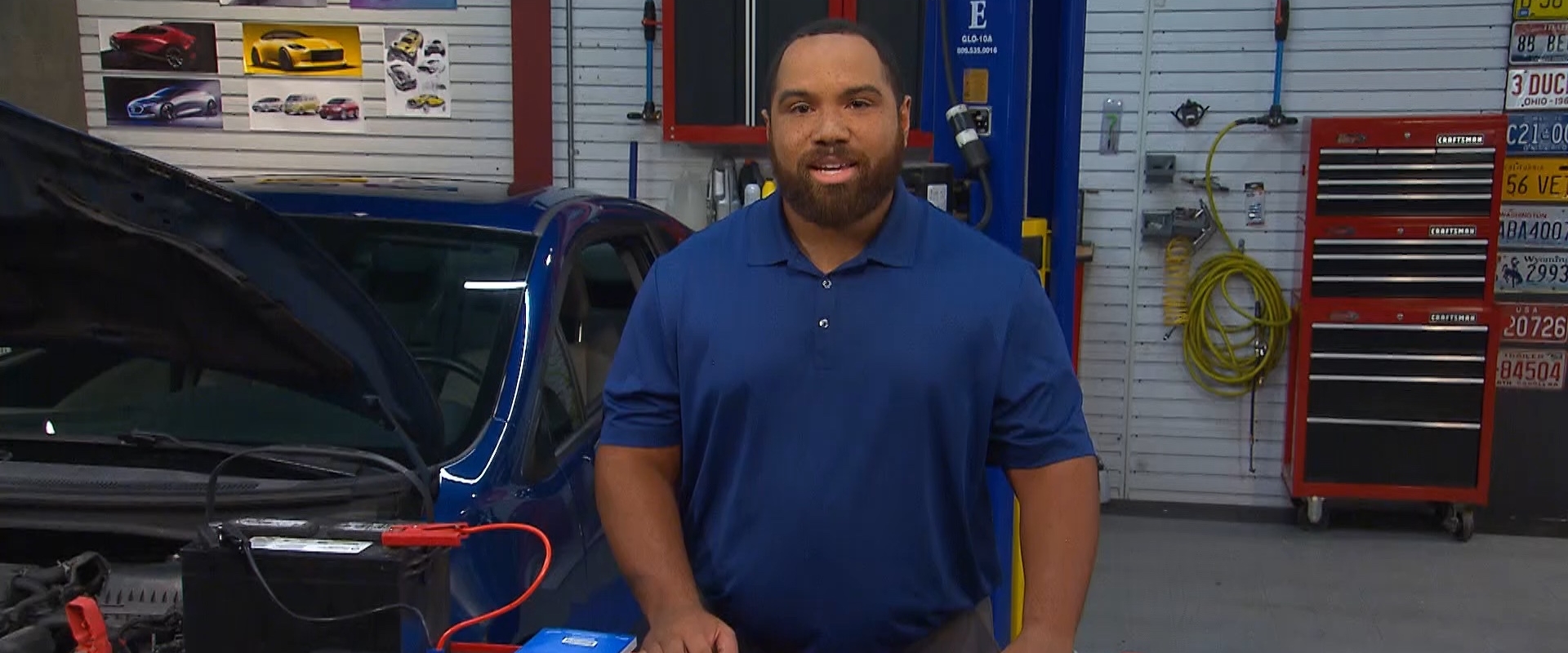Jump Starting
If your car won’t start, it just might be a dead battery. A simple jump start can get you back on the road in a pinch, but as our “Your Drive” expert Logan McCombs is about to show us, there’s a little bit of nuance to this age-old trick.
LOGAN MCCOMBS: If you find yourself stuck with a dead or discharged battery in your car, here’s a few things you should know. If you use jumper cables incorrectly, you can create a voltage spike that can fry the electronics in both vehicles. Jump-starting with a jumper pack like this is a better alternative. The battery inside the jumper pack provides the boost to the dead battery at a safe voltage.
First turn off all lights and electronic accessories in the dead vehicle. Then connect the positive or red clamp to the positive battery post and the negative or black clamp to the negative battery post. Then try starting the vehicle. The jump pack may need to cool down for a minute between tries. You need a minimum of 225 cranking amps to start a four-cylinder engine, and closer to 400 for a V8, so check the rating and buy a pack that has enough cranking amps, not peak amps. Remember, jump packs require regular recharging. You can’t charge a pack, throw it in your trunk for six months and expect it to work when you need it.
Jumper cables are still safe to use on most cars. If you’re not sure about yours, check your owners manual. The cables should be 4-gauge wire or bigger, with adequate insulation and clean metal clamps. Cheap cables will get very hot, and damaged cables can shock you. It’s important to make sure the metal ends of the jumper cables do not touch each other or any metal surfaces on the car until they are connected correctly, and that they don’t rest on any moving parts of the engine. Hook the cables up in this full-circle sequence to help avoid that dreaded voltage spike: One red clamp to the positive terminal on the dead battery.. just remember “Red to Dead” . Then hook up the other red end to the good battery’s positive terminal. Next, clamp the black cable to the good battery’s negative terminal and finally the last black clamp to an unpainted metal engine part or chassis grounding point on the disabled car. Start the good car, rev the engine lightly for a few minutes, then try to start the disabled vehicle.
If you carry a jump box or jumper cables in your car and know how to use them properly, a dead battery need not leave you stranded. And if you have a question or comment, reach out to us, right here at MotorWeek!






